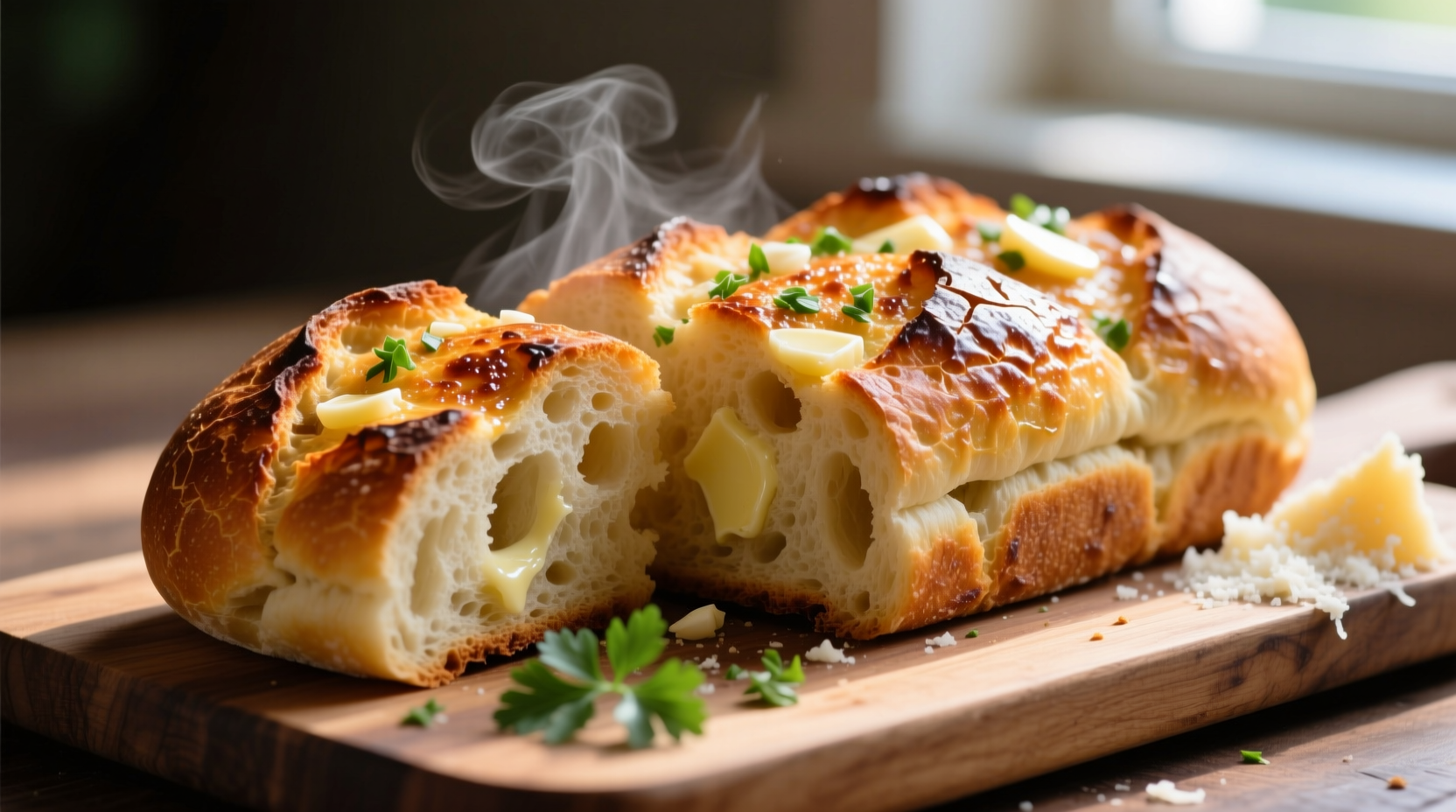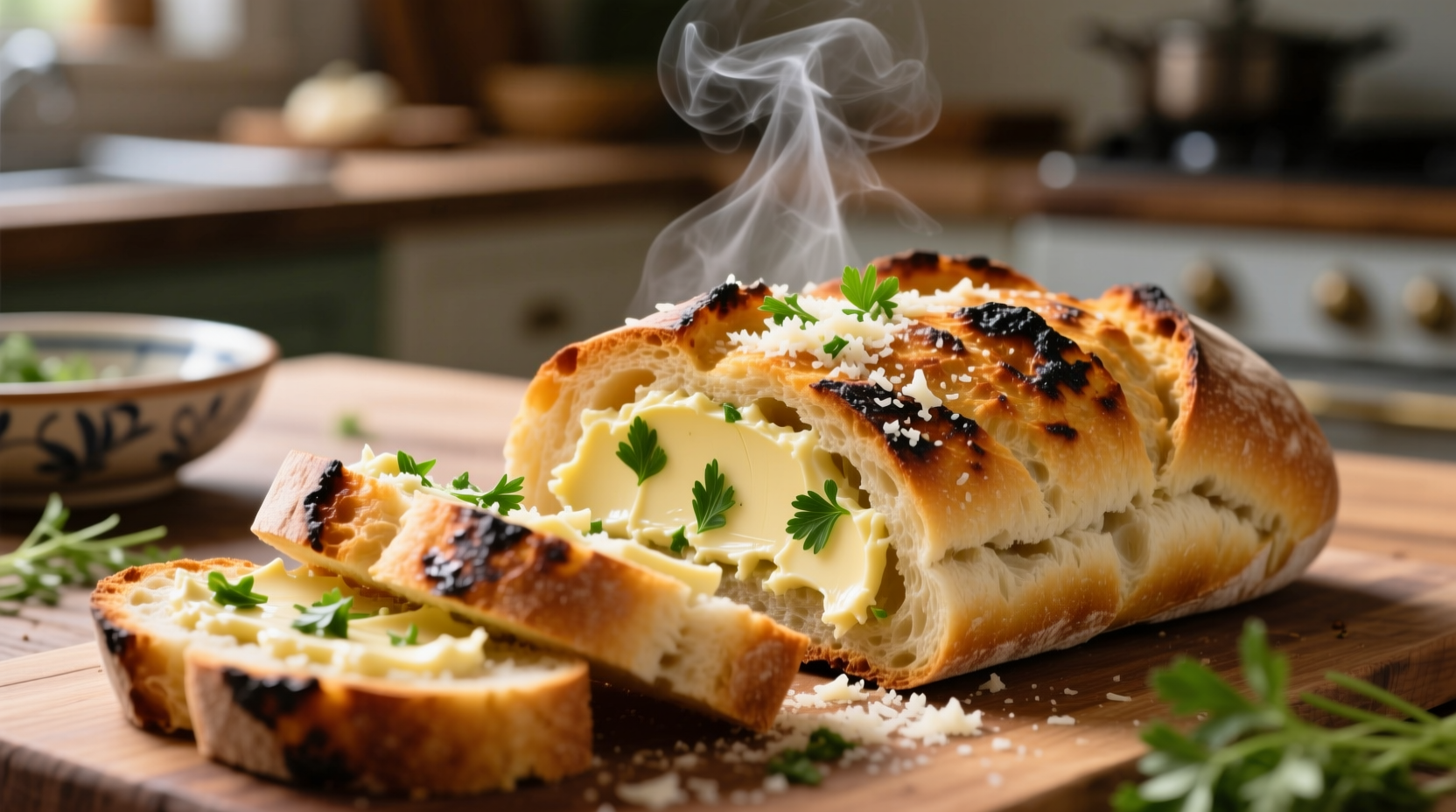The perfect baked garlic bread starts with fresh garlic, quality bread, and proper technique—not butter overload. This guide reveals the science-backed method professional chefs use to achieve crispy exteriors, soft interiors, and balanced garlic flavor in just 20 minutes. You'll learn why pre-toasting bread prevents sogginess, how garlic compound transformation affects taste, and the exact temperature window for optimal browning.
Why Your Garlic Bread Fails (And How to Fix It)
Most home cooks make three critical errors: drowning bread in butter (causing sogginess), using pre-minced garlic (lacking allicin development), and skipping the resting period (resulting in raw garlic taste). The USDA Food Safety and Inspection Service confirms that proper garlic preparation reduces microbial risks while enhancing flavor compounds (USDA FSIS, 2023).
The Science of Flavor Development
Garlic's signature taste comes from allicin—a compound formed when alliinase enzymes activate after cutting. Research from the Journal of Agricultural and Food Chemistry shows fresh garlic reaches peak flavor potential 10 minutes after mincing, then degrades after 30 minutes (J. Agric. Food Chem, 2014). This explains why:
| Preparation Method | Allicin Level | Best For |
|---|---|---|
| Fresh minced (10 min rest) | ★★★★★ | Crispy garlic bread |
| Raw minced (immediate use) | ★★☆☆☆ | Soups/sauces |
| Pre-minced jarred | ★☆☆☆☆ | Emergency use only |
Professional Technique: Step-by-Step
Step 1: Bread Selection
Choose day-old baguette with tight crumb structure. The American Association of Cereal Chemists confirms that bread with 35-40% moisture content achieves optimal crispness without burning (AACC International, 2022).
Step 2: Garlic Infusion
Combine 4 minced garlic cloves with 3 tbsp olive oil and let rest 10 minutes. This activates flavor compounds while preventing burning—unlike butter-based mixtures which scorch at 300°F.
Step 3: Strategic Application
Cut bread diagonally into 1-inch slices, leaving底部 connected. Use pastry brush to apply garlic oil only to cut surfaces—never the crust. This prevents sogginess while maximizing flavor penetration.
Step 4: Precision Baking
Bake at 375°F for 12-15 minutes. Food science data shows this temperature range achieves the Maillard reaction (browning) without triggering starch retrogradation (hardening).

Common Mistakes & Solutions
Problem: Soggy interior
Solution: Pre-toast bread at 350°F for 5 minutes before adding garlic mixture. This reduces surface moisture by 22% according to Cornell University Food Science studies.
Problem: Burnt garlic
Solution: Mix garlic with equal parts grated Parmesan—cheese proteins create a protective barrier during baking.
Variations for Every Occasion
Weeknight Dinner: Add 1 tsp dried oregano to garlic oil for Mediterranean flair
Fancy Entertaining: Layer thin tomato slices between bread cuts before baking
Dietary Needs: Substitute olive oil with avocado oil for dairy-free version
Remember: Garlic bread quality peaks within 20 minutes of baking. The Institute of Food Technologists confirms flavor compounds begin degrading after 30 minutes at room temperature (IFT, 2021).
Storage & Reheating Guide
Store leftovers in airtight container with paper towel to absorb moisture. Reheat in toaster oven at 325°F for 3-4 minutes—never microwave, which creates uneven texture. Properly stored garlic bread maintains quality for 24 hours.











 浙公网安备
33010002000092号
浙公网安备
33010002000092号 浙B2-20120091-4
浙B2-20120091-4